In the last episode we learned the anatomy of the rib cage. If you haven’t seen that one yet, make sure not to miss it.
In this episode, I’ll show you how to draw the forms of the rib cage step by step.
DRAWING 1

I always like to start my drawings with the biggest shapes first. In this case it will be the egg-like shape. It’s thinner at the top where the neck attaches, and thickest about ⅓ from the bottom. Try not to draw the entire shape with one stroke. Construct the shape with many segments, analyzing the angle of each line as you go. Constructing a shape from many angles like this allows you to visualize the shape and spend more time making sure it’s the correct shape. Rather than doing it in one stroke hoping your hand lands in the right spot. You can see how with this shape I established the angle of the top plane, front plane, the angle between the corners of the rib cage, and the curve of the bottom and back.

I’m being specific about each section of the shape while maintaining the tilt and the width to height relationship of the overall shape.

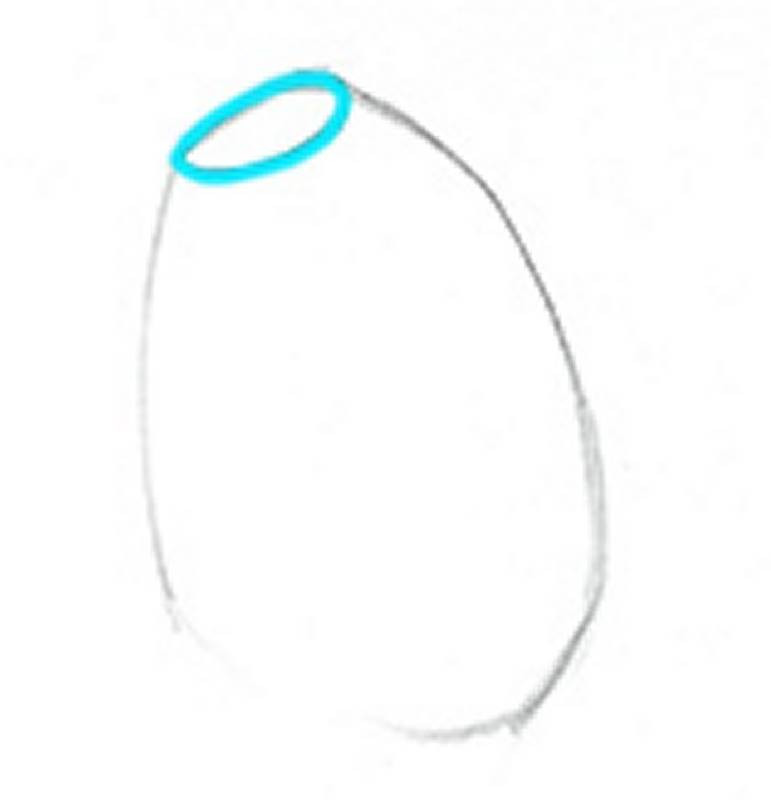
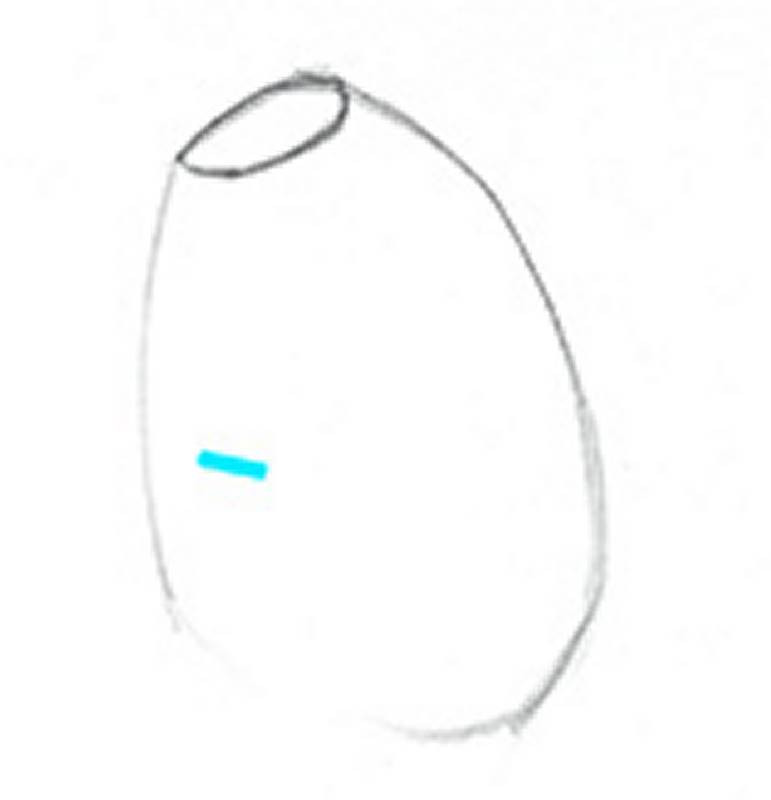
The top plane of the rib cage tilts forward, so keep that in mind as you try to visualize the planes.
Find the bottom of the sternum. Remember, it’s about half way between the pit of the neck and the bottom of the rib cage.
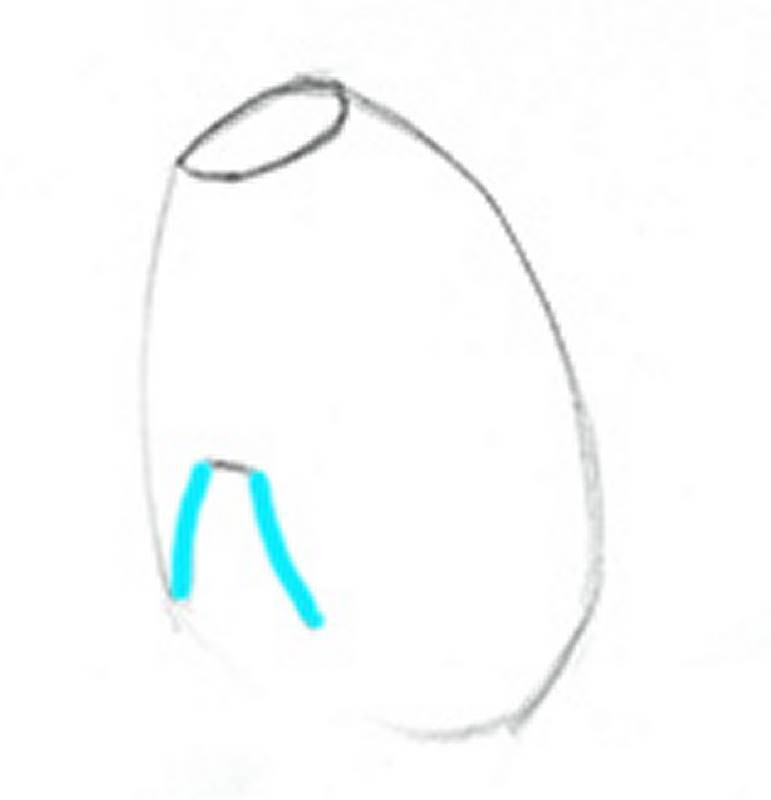
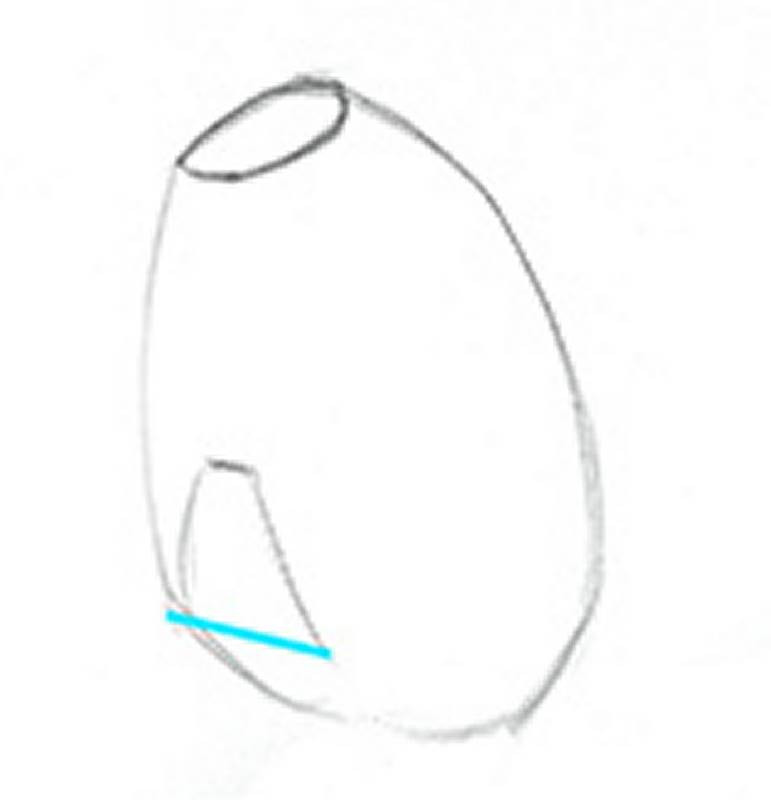
The cartilage that defines the thoracic arch starts from the bottom of the sternum. So, from there I’ll extend the thoracic arch shape, while considering the way perspective would affect that shape.
I like to relate one side to the other and make sure that the angle of that line follows the angle of the front plane as if this was a box.
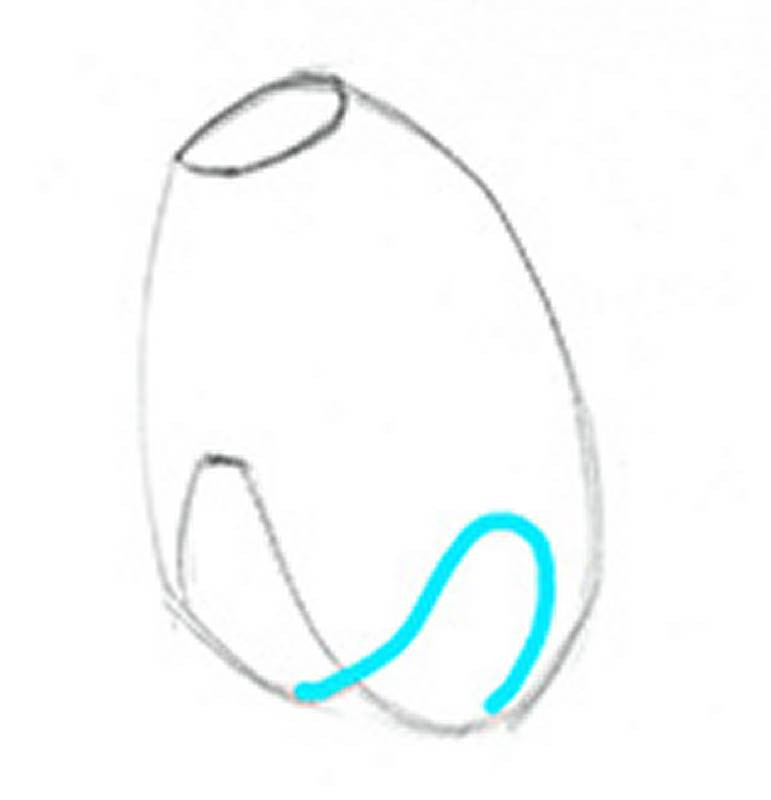
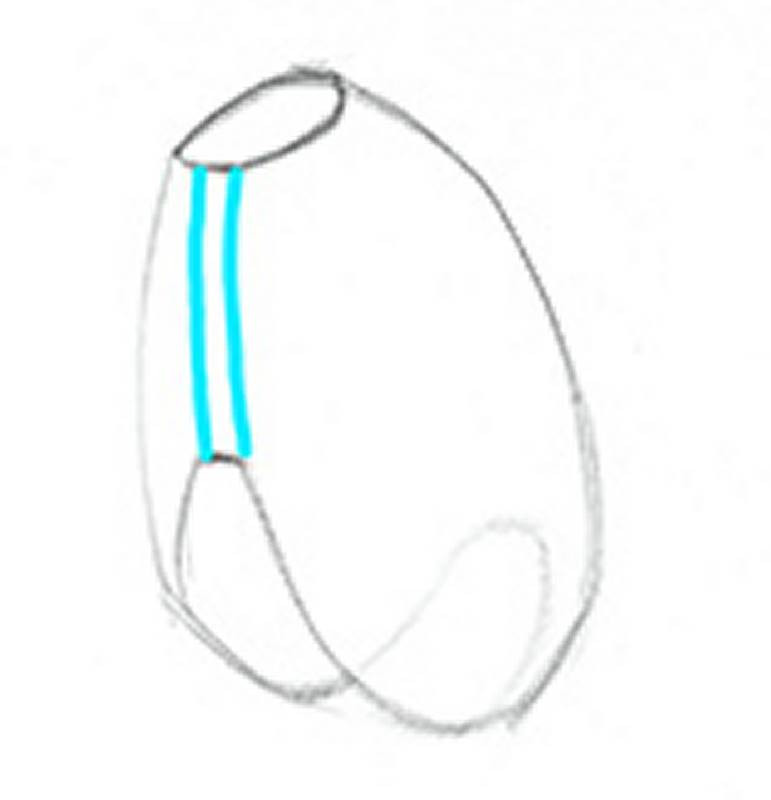
This side of the bottom plane is covered up, but I’ll ghost it in anyway so I can visualize these forms better.
Indicate the edges of the sternum, curving over the front plane.

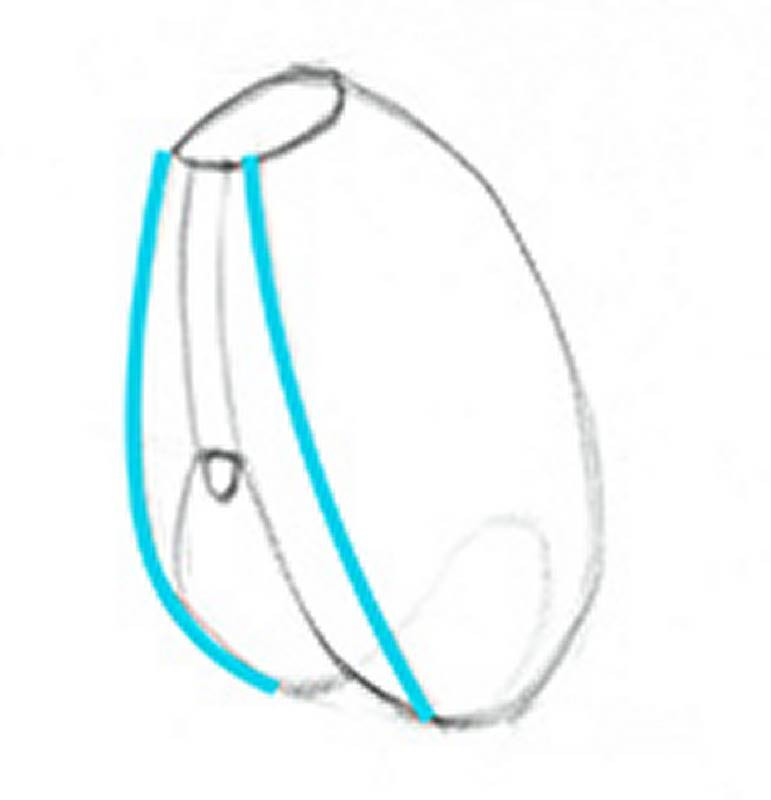
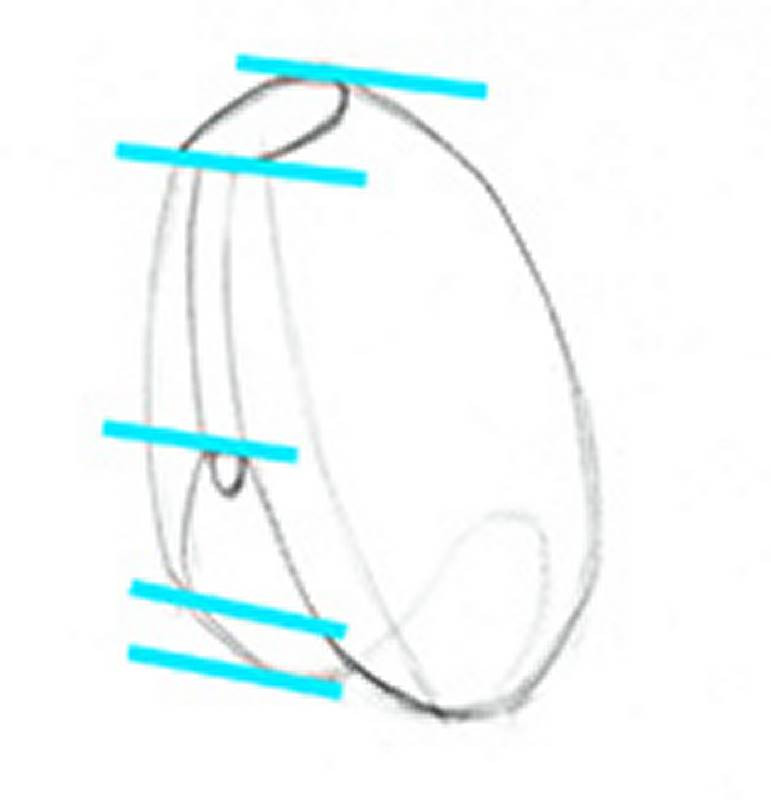
Everything on the front or back plane will be at this angle, like a box in perspective.
DRAWING 2
Let me show you what I mean when I talk about the rib cage being a box.

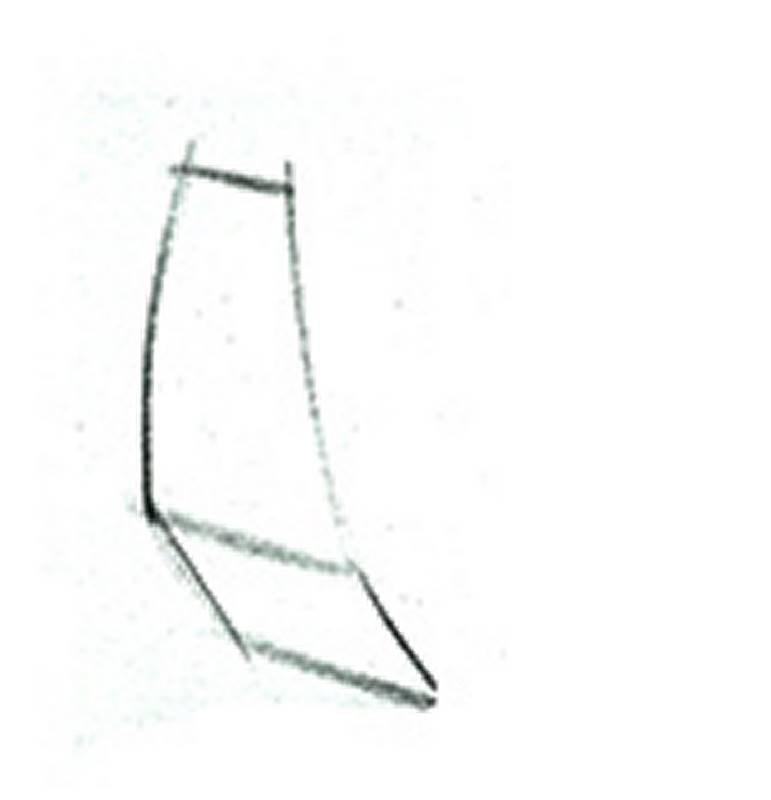
We’ll think of the front of the rib cage as this flat plane that’s rotated slightly to the left and downward.
The widest part of the rib cage is ⅓ from the bottom, so from there I’ll extend a plane inward. Still part of the front plane just getting narrower.
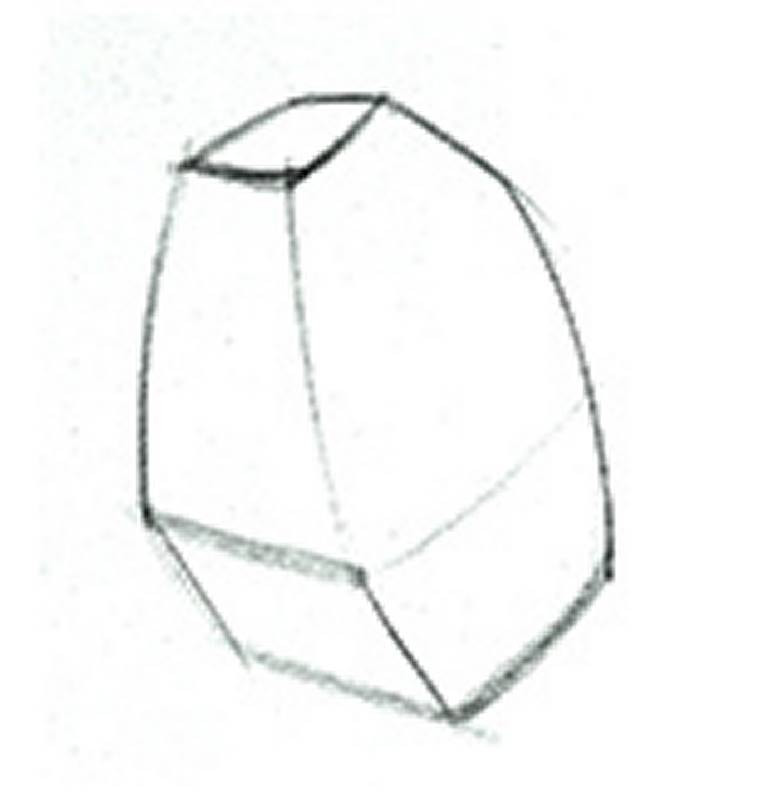

From that, we can complete the box with a side plane and top plane.
So, we have the big simplified volume of the rib cage, and we can just draw the shape of the thoracic arch right on it. Start by finding the bottom of the sternum and then some major angles downward toward the corners.
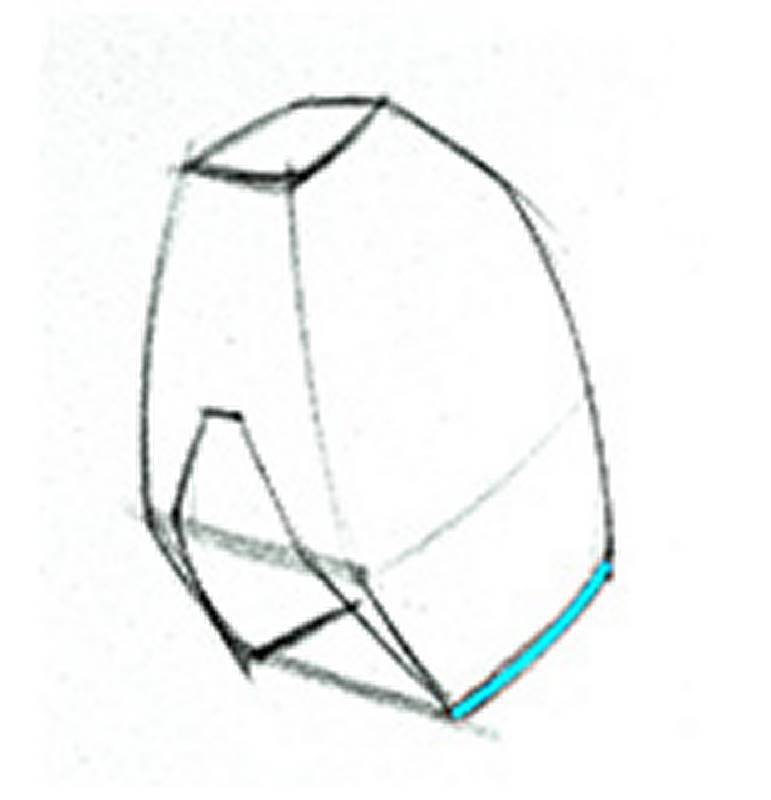
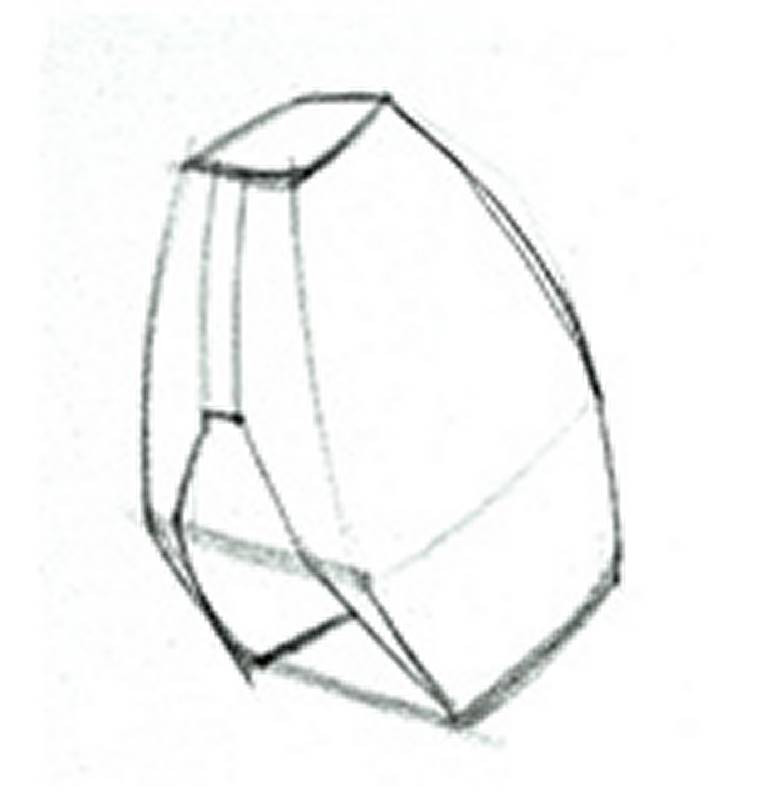
And since the thoracic arch is an opening, we can see the bottom edge on the far side. It will be parallel to the other bottom edge.
Let’s clean up this back side. Ok, so that’s the front of the rib cage.
DRAWING 3
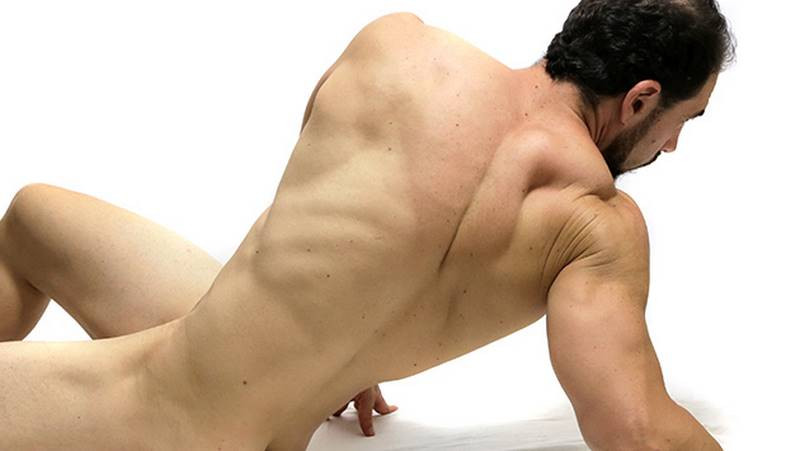
The major structure from the back is very similar, but the wedge shape at the spine is a bit tricky, so I want to show you how to do that.
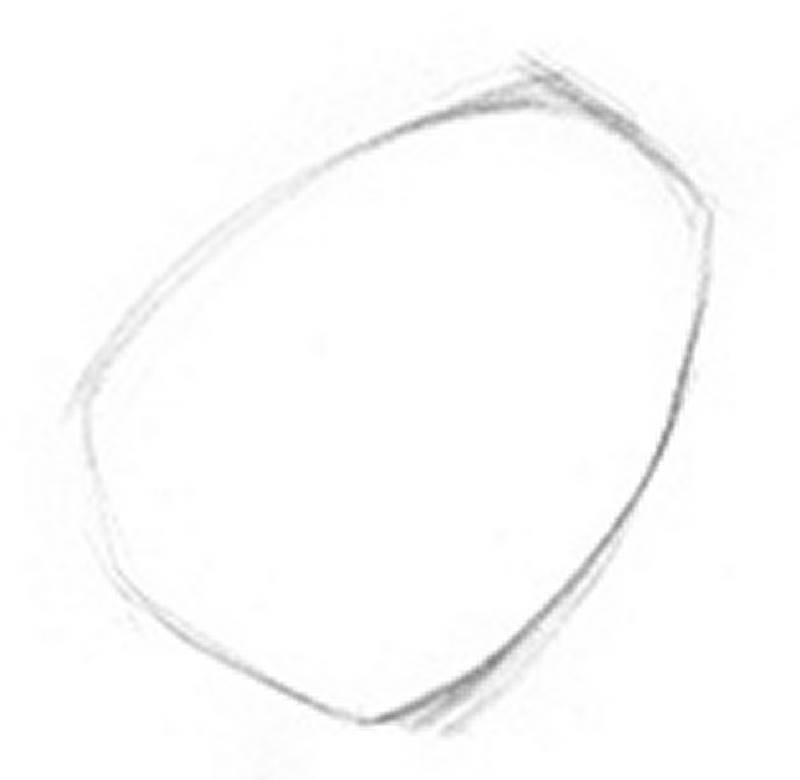
Start the major shape in the same way I do for the front. Constructing that shape in parts.
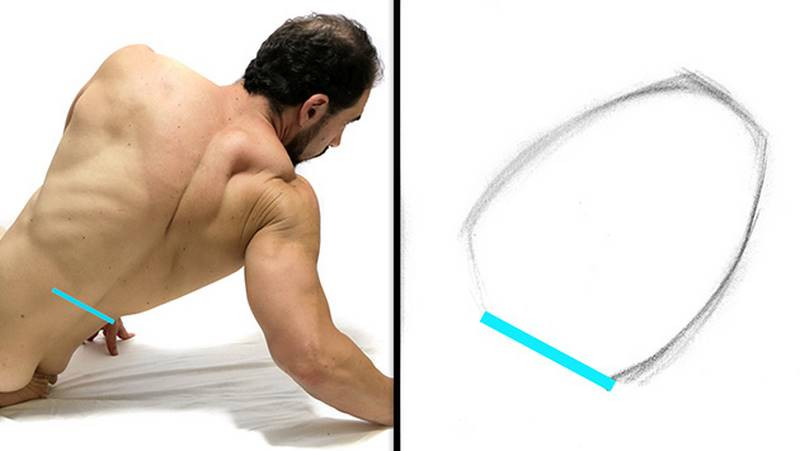
For this bottom edge of the back plane, I’m observing the angle here on his back and trying to imagine what it would look like of it was a box. And then it transitions to the angle of the side plane.

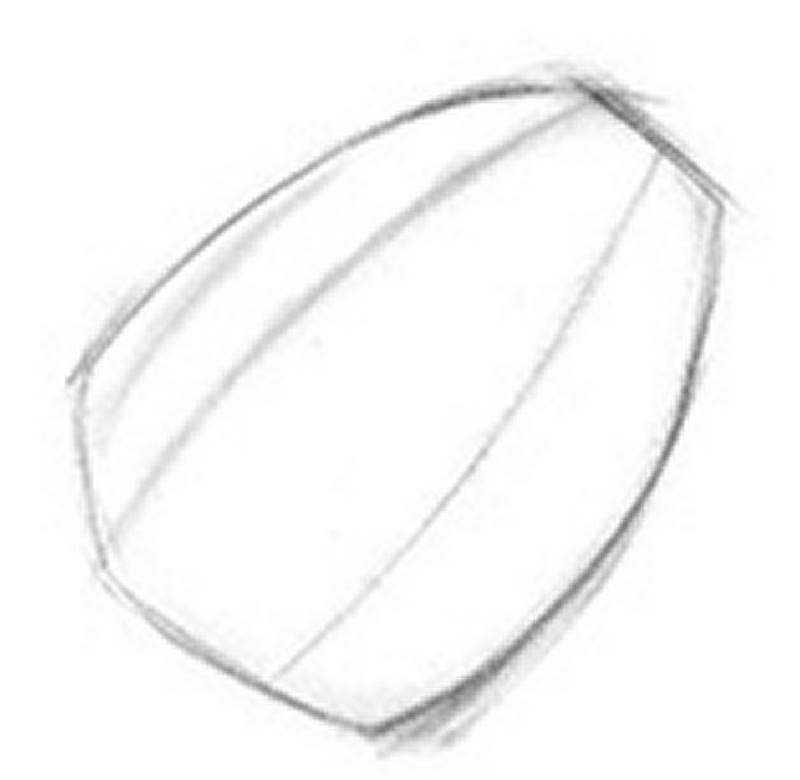
Find the edge between the side plane and back plane. At this point it should look like a simple 3 dimensional form. Notice that even though he is leaning back and toward us a bit, we’re not seeing the top plane of the rib cage.
That’s because the top plane tilts forward, so in most back poses the top plane will be hidden behind the back plane.
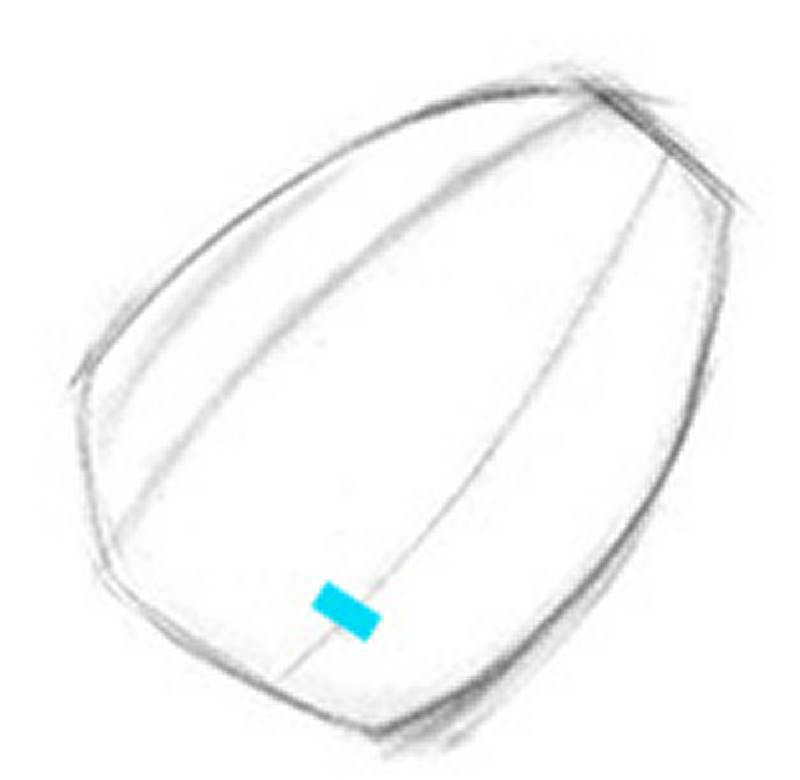
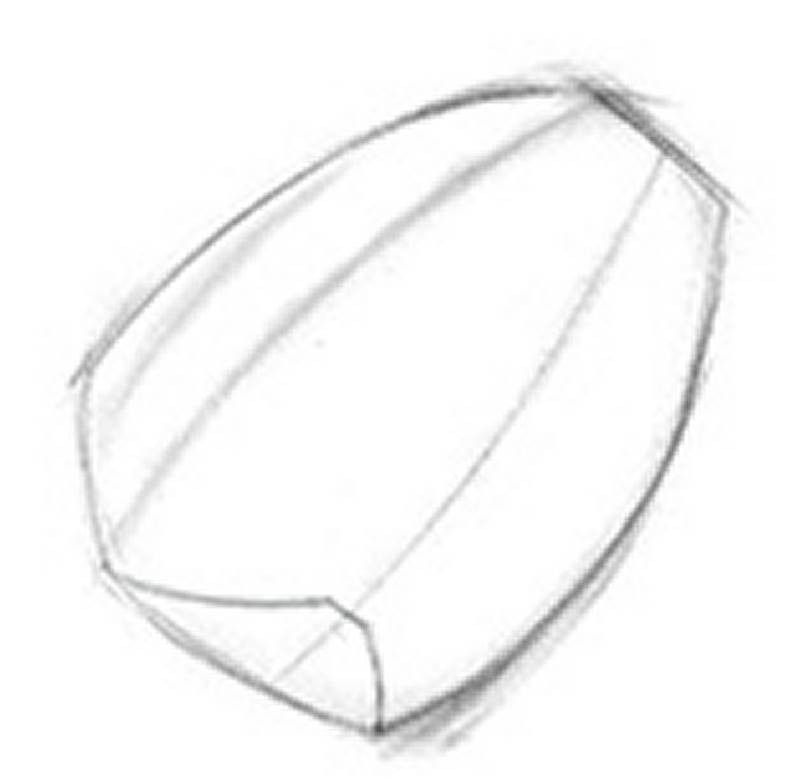
The 12th rib actually connects to the spine up here and then angles downward.
So, I like to define that edge. It’s the same edge that we ghosted in from the front view in the previous drawing.
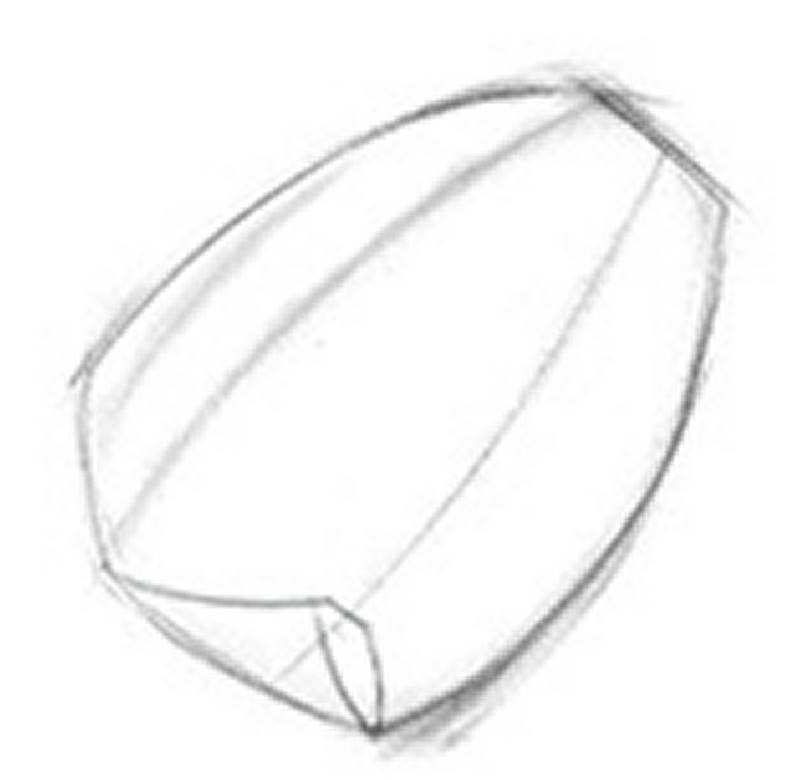
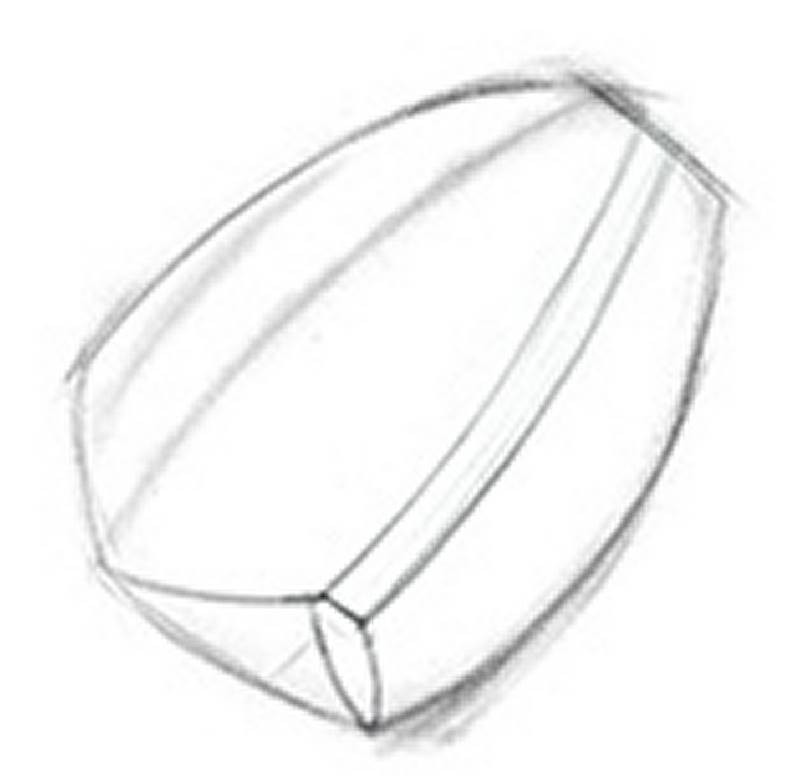
It’s a continuation of the thoracic arch as it curves around the bottom corner of the ribcage and comes back up to connect to the spine.
Ok, this is the part that I wanted to go over. Remember in the previous video I mentioned that the back plane has a concave wedge that holds the spine. To cut this wedge shape out, we can think of 3 planes. One center plane…
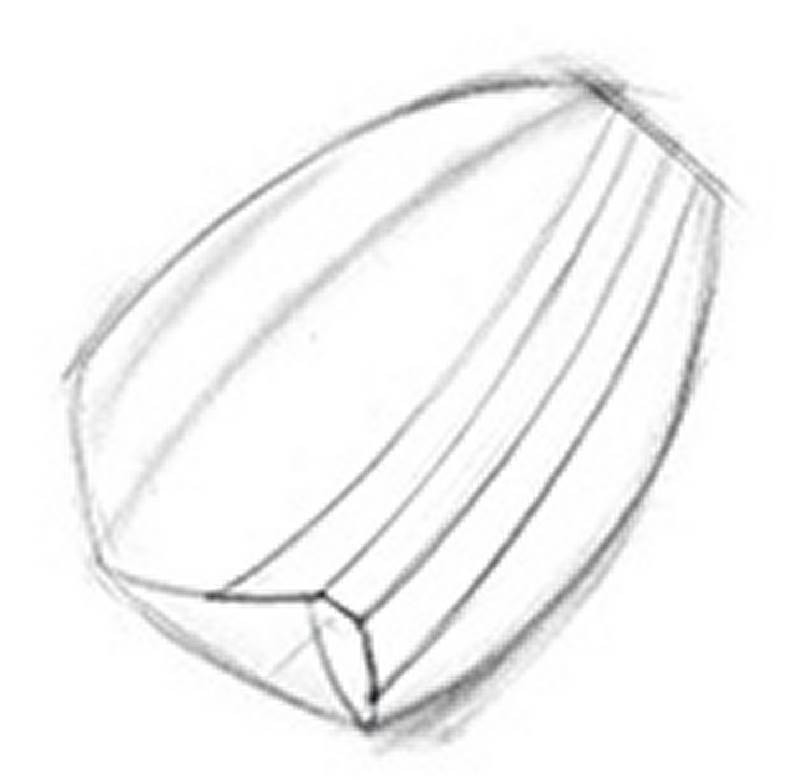
…and 2 side planes. The center plane just follows the curvature of the thoracic vertebrae. On each side of this center plane, we’ll have a inward facing side plane.
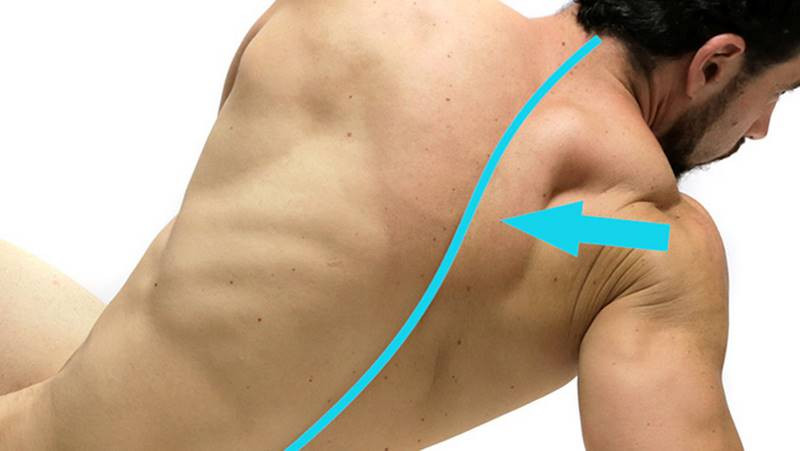
I want to point out that this S curve is highly exaggerated by the trapezius muscles. The spine will curve a little bit, but the curve we’re seeing here is the muscle pushing in past the center line.
Thoracic spine rotation does affect the rib cage, but not nearly as much as this pose might suggest. Ok, let’s get back to that wedge.
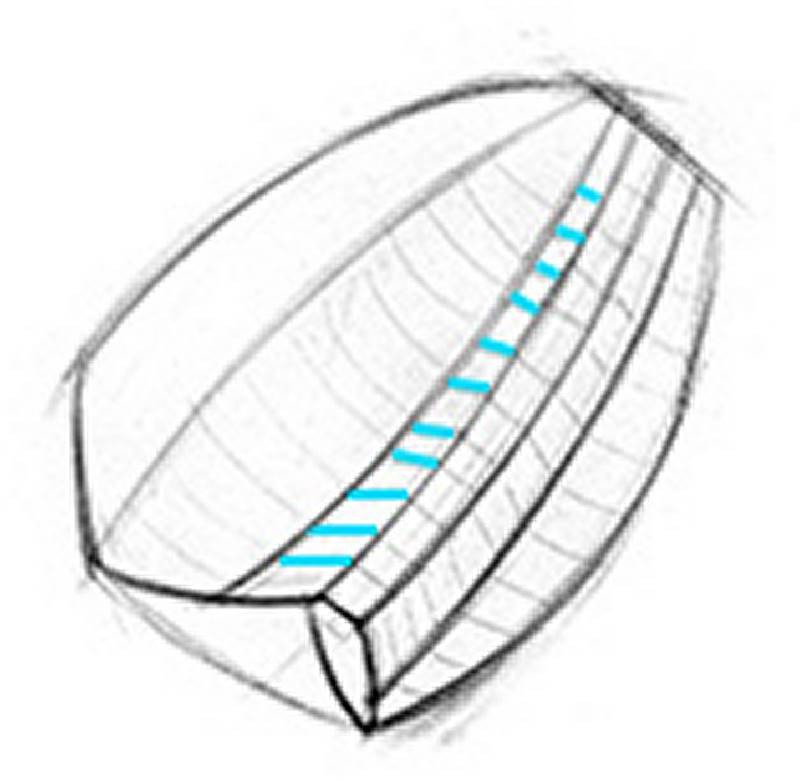
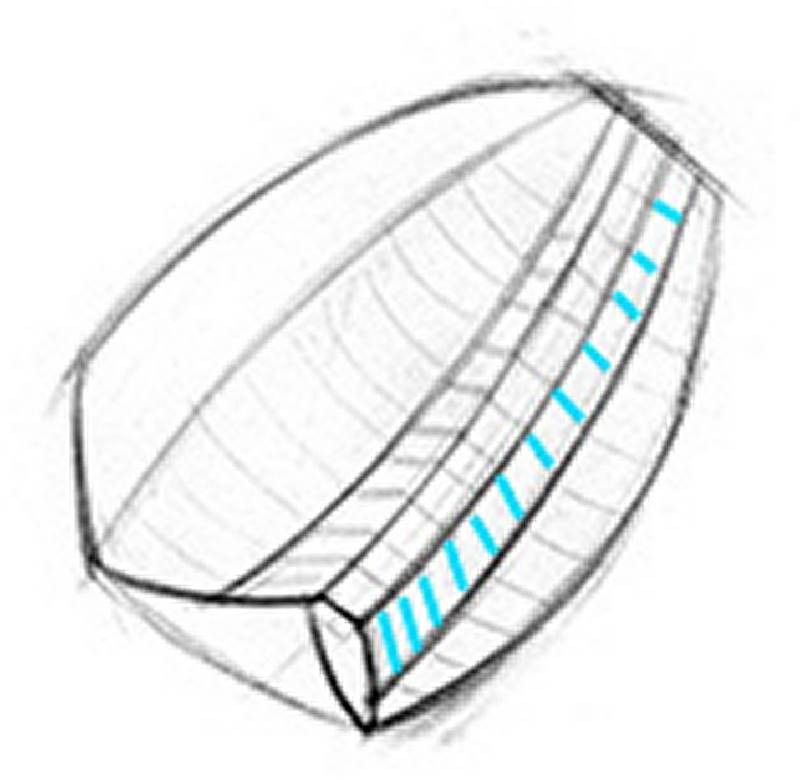
This might just look like 4 vertical lines to you, but try to imagine the cross contour of this surface. This plane angles like this.
And this plane angles like this.

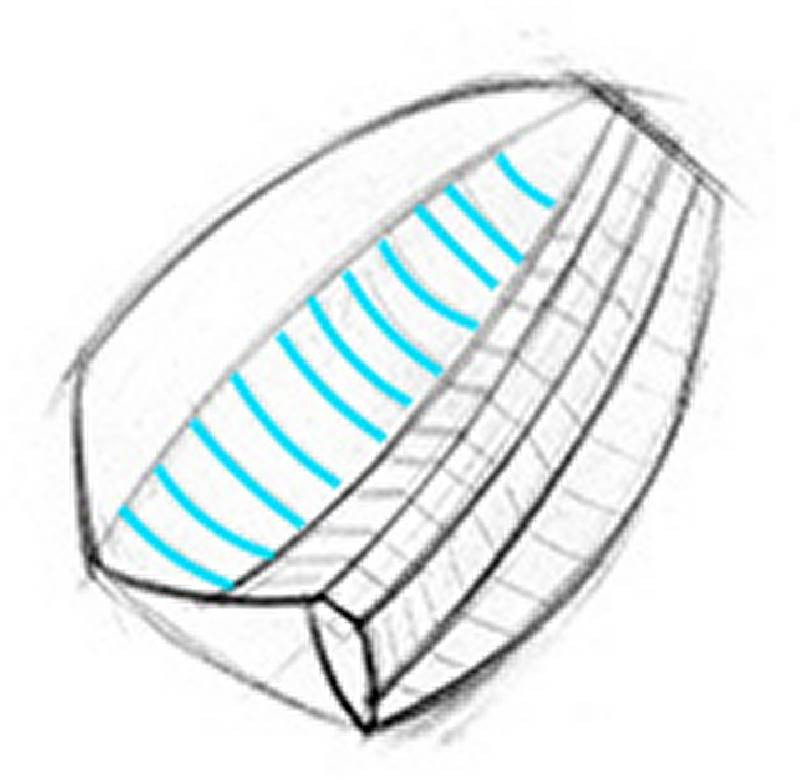
This is part of the back plane.
And this is also part of the back plane.
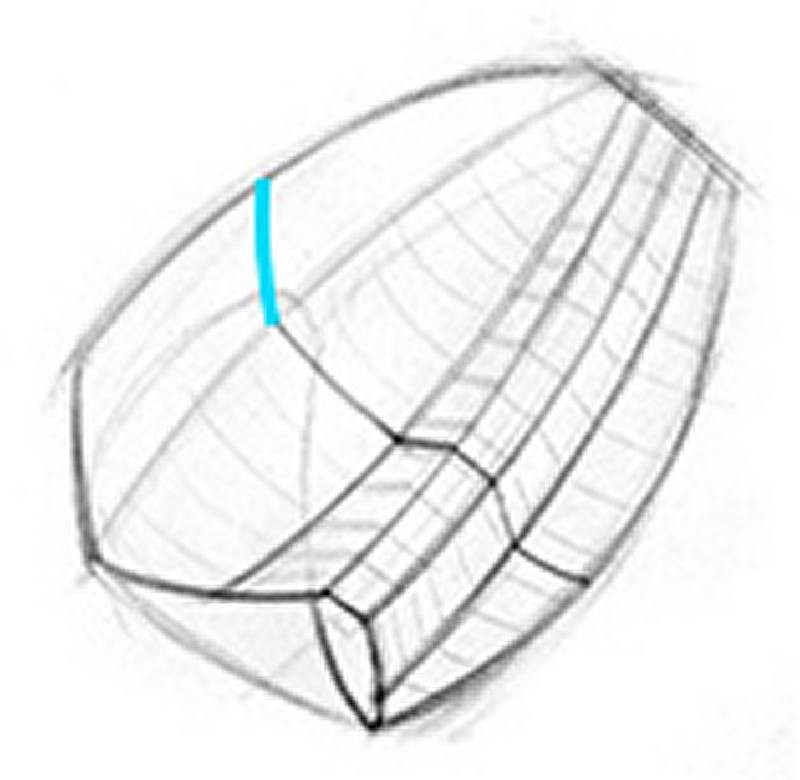
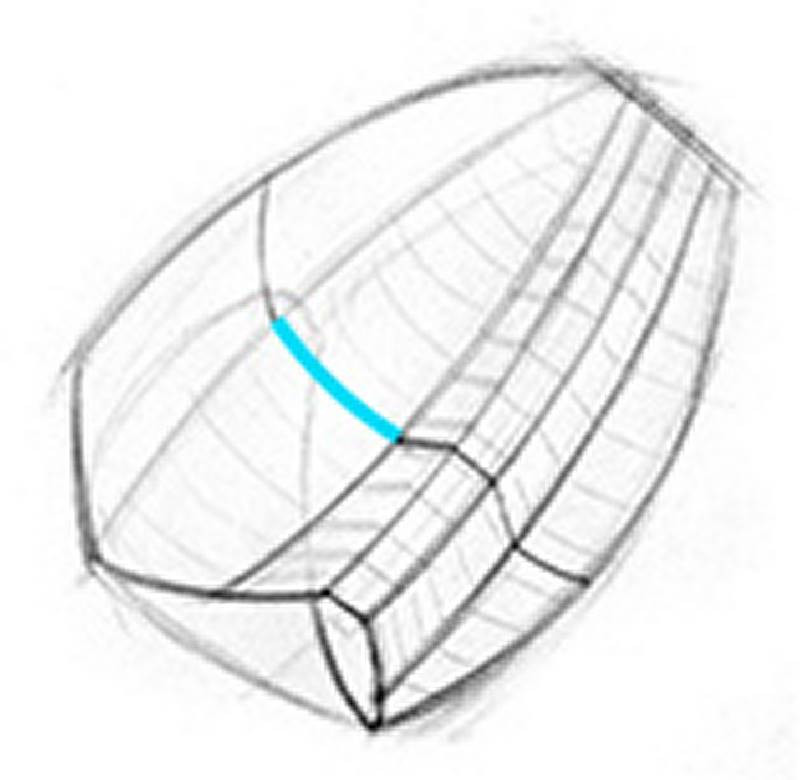
If a trail of ants marched across this surface, that ant trail would be the cross contour line. Around the side plane…
…across the back plane…
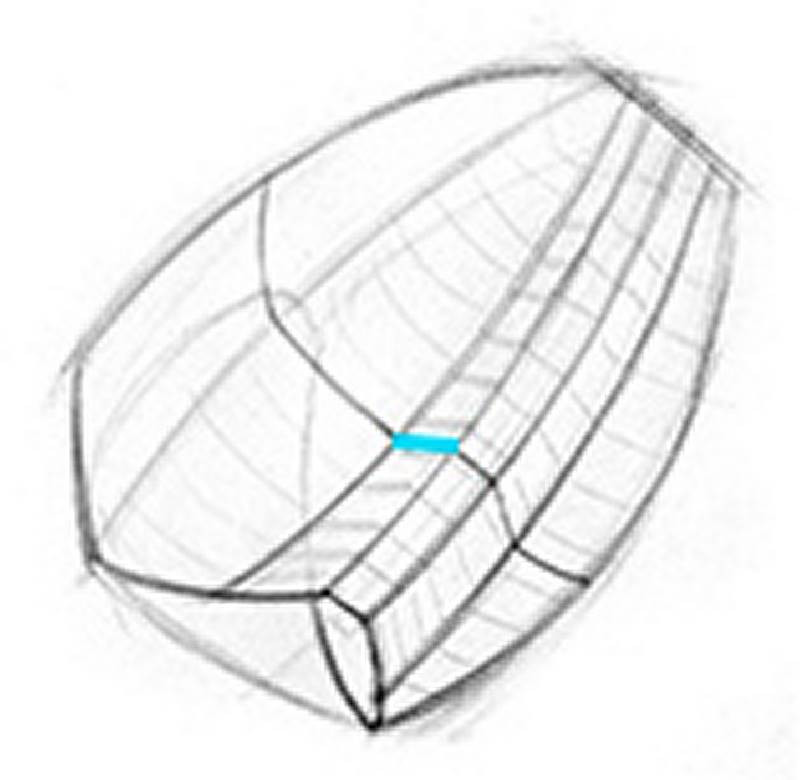
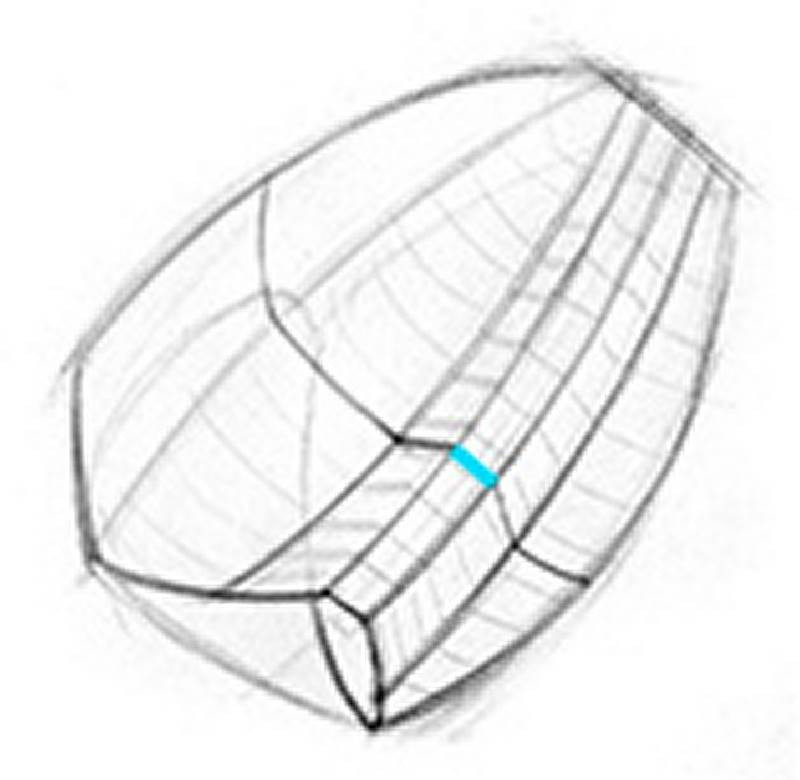
…down the wall of the wedge…
…across the center…
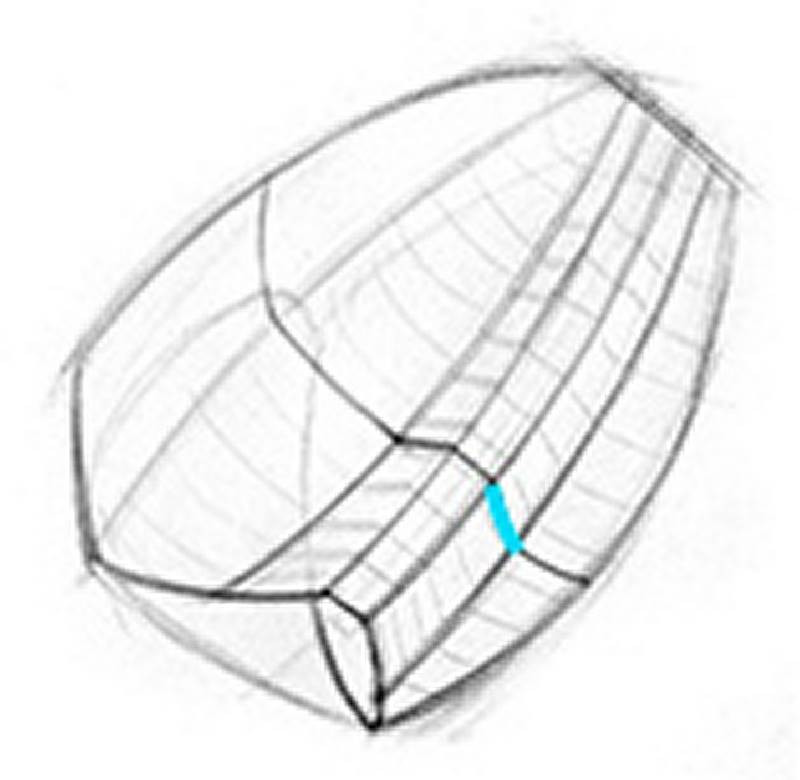
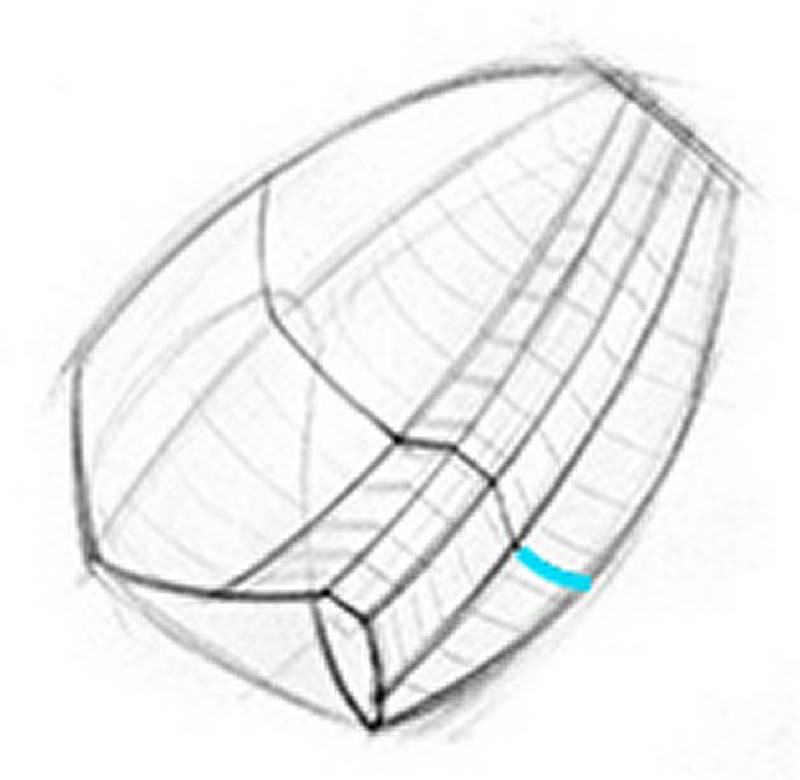
…then back up the other wall of the wedge…
…and across the rest of the back plane.
Keep practicing drawing the forms until you have them memorized. If you’re struggling with perspective, go back and rewatch my video on structure. Practice drawing boxes in perspective. Once you can easily draw a box, then you can start making that box more complicated by cutting out wedges.
Rib Cage Assignment Examples
To view all 10 rib cage assignment examples, sign up for the premium anatomy course!
For additional help, watch my critique session on the rib cage. I go over student submitted work and provide insights on how they can improve their assignment examples.
